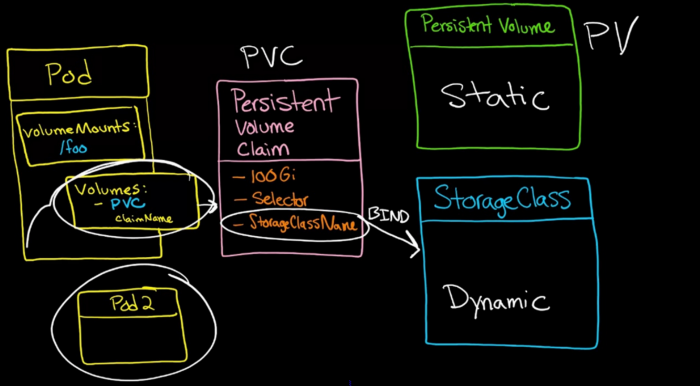What is a Volume Snapshot?
Many storage systems (like Google Cloud Persistent Disks, Amazon Elastic Block Storage, and many on-premise storage systems) provide the ability to create a “snapshot” of a persistent volume. A snapshot represents a point-in-time copy of a volume. A snapshot can be used either to provision a new volume (pre-populated with the snapshot data) or to restore an existing volume to a previous state (represented by the snapshot).
Why add Volume Snapshots to Kubernetes?
The Kubernetes volume plugin system already provides a powerful abstraction that automates the provisioning, attaching, and mounting of block and file storage.
Underpinning all these features is the Kubernetes goal of workload portability: Kubernetes aims to create an abstraction layer between distributed applications and underlying clusters so that applications can be agnostic to the specifics of the cluster they run on and application deployment requires no “cluster specific” knowledge.
The Kubernetes Storage SIG identified snapshot operations as critical functionality for many stateful workloads. For example, a database administrator may want to snapshot a database volume before starting a database operation.
By providing a standard way to trigger snapshot operations in the Kubernetes API, Kubernetes users can now handle use cases like this without having to go around the Kubernetes API (and manually executing storage system specific operations).
Instead, Kubernetes users are now empowered to incorporate snapshot operations in a cluster agnostic way into their tooling and policy with the comfort of knowing that it will work against arbitrary Kubernetes clusters regardless of the underlying storage.
Additionally these Kubernetes snapshot primitives act as basic building blocks that unlock the ability to develop advanced, enterprise grade, storage administration features for Kubernetes: including application or cluster level backup solutions.
What’s new in Beta?
With the promotion of Volume Snapshot to beta, the feature is now enabled by default on standard Kubernetes deployments instead of being opt-in.
The move of the Kubernetes Volume Snapshot feature to beta also means:
- A revamp of volume snapshot APIs.
- The CSI external-snapshotter sidecar is split into two controllers, a common snapshot controller and a CSI external-snapshotter sidecar.
- Deletion secret is added as an annotation to the volume snapshot content.
- A new finalizer is added to the volume snapshot API object to prevent it from being deleted when it is bound to a volume snapshot content API object.
#kubernetes #volume snapshot
